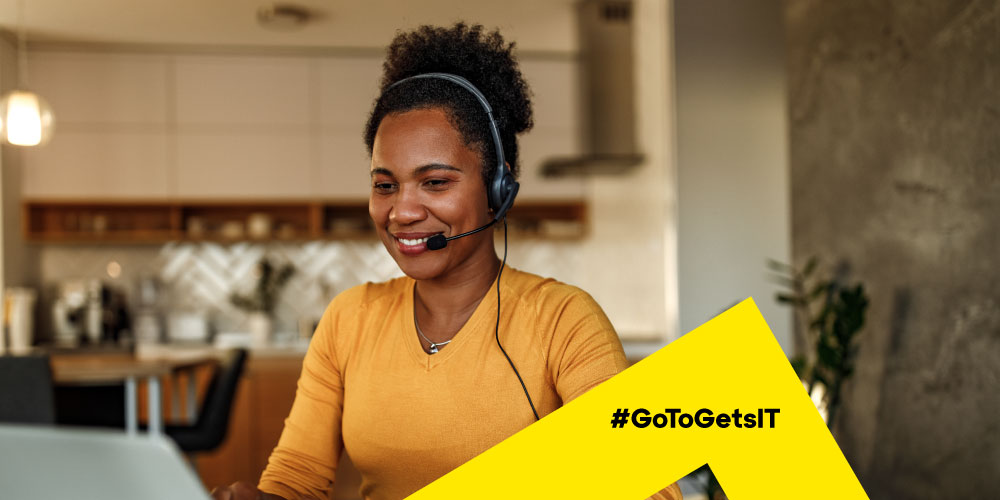Today's consumers expect to communicate with brands via multiple channels via their preferred devices and platforms. The ability to reach prospects and customers via text messages has become table stakes.
In fact, 25% of consumers in the U.S. say they frequently or very frequently interact with branded SMS/MMS messages, while 91% want to receive text messages from businesses. Meanwhile, SMS marketers report to generate as much as $71 for every dollar spent!
You may have already noticed that we use the terms SMS and MMS to refer to this customer communication channel. But what are they, how do they differ, and when to use which one?
MMS vs. SMS messaging: A comparison
While both SMS and MMS are texting services that send messages between mobile devices or computers, they have some key differences. Here's what you need to know:
What is an SMS message?
SMS (Short Message Service) is a text-only message sent from one device (e.g., mobile phone) to another via a cellular network.
What is an MMS message?
MMS (Multimedia Messaging Service) is based on the same technology as SMS but can send multimedia content such as images, videos, audio, and contacts.
Message formats and lengths
The ability to transmit multimedia content means MMS has a more complex message format than SMS. MSM messages are often larger in size, with a longer character limit of 1,600, while SMS has a maximum length of 160 characters per message.
Multimedia capabilities
MMS can transmit various file formats (e.g., video, audio, etc.), while SMS is limited to text-only messages. You can send alphanumeric characters, special symbols, and emojis via SMS, but not images, videos, etc.
Network prerequisites and compatibilities
MMS messages use a mobile data connection to transmit multimedia content, requiring both the sending and receiving devices to be MMS-capable and on a compatible mobile network. On the other hand, SMS messages are sent via a cellular network's control channel. They don't depend on mobile data availability, are more reliable, and work on virtually any mobile phone.
Unpacking SMS messaging use cases
SMS's reliability, high deliverability, and network/device compatibility make it an ideal communication tool for reaching a broad audience with short messages:
- Deliver time-sensitive alerts and notifications that require immediate attention, such as transaction activities, appointment reminders, and flight updates.
- Send one-time passcodes for two-factor authentication (2FA) to prevent unauthorized access to accounts, networks, applications, or online services.
- Handle direct customer support messages and prompts, such as order updates, customer inquiries, surveys, and appointment scheduling.
Exploring MMS messaging scenarios
MMS's ability to handle multimedia content gives it an edge in communicating complex messages and building audience relationships:
- Send media-rich, personalized communications (e.g., photos of an event) to foster relationships and make your brand more memorable.
- Support marketing campaigns with visual elements (e.g., new product photos, eye-catching ads) and interactive content.
- Share moments with visual media like photos and videos to keep an audience engaged (e.g., a contest unfolding in real-time.)
- Provide virtual tours — for example, real estate agents can show properties to more potential buyers via images and videos.
Balancing the benefits and constraints of MMS and SMS
Since MMS messages can deliver engaging multimedia content, it's ideal for marketing campaigns that build personal connections and emotional engagement with an audience. You can share compelling stories through visual sequences or multimedia presentations or provide step-by-step visual instructions to enhance customer support.
Meanwhile, SMS messages' universal compatibility and accessibility (i.e., people with visual or hearing impairments can use them) allows you to reach a broader audience. Their reliability makes them ideal for time-sensitive alerts, and their less data-intensive nature makes them a low-cost option for effective customer communication.
Some users prefer the simplicity of SMS messages, while others enjoy MMS's media-rich content. When choosing a messaging technology for your business, consider the following:
- SMS messages have a shorter character limit. Longer messages are split into multiple segments, which may impact the user experience. o SMS messages are more "cut and dry" — the transactional nature makes them less suitable for driving audience engagement.
- MMS messages often require a data plan, and some users may opt out due to additional data charges.
- MMS is more prone to delivery issues due to carrier restrictions, device compatibility, and network congestion.
- Not all devices support MMS or display the content correctly — for example, a phone may resize an image, affecting the quality.
- Both SMS and MMS messaging must comply with regulations, such as opt-in requirements for marketing messages.
Staying current with the latest messaging technologies
Businesses must stay current with fast-evolving messaging technologies to deliver a modern brand experience. These may include incorporating richer and more interactive content through augmented reality (AR) to increase engagement or using AI-powered chatbots to provide prompt responses.
Meanwhile, integration with a unified communication platform will allow SMS and MMS messaging to play an even more crucial role in delivering a seamless, multi-channel customer experience. You can interact with customers via various touchpoints, such as voice calls, video calls, social media, and text messaging via a single platform to streamline workflows and drive engagement.
For instance, GoTo allows you and your staff to manage all customer communications, including text messages, via a unified interface. All team members can view, pick up, and resolve inquiries to improve response times and ensure no customer slips through the cracks. Learn more about our customer engagement solution and get in touch to see how we can help you deliver an engaging experience.


